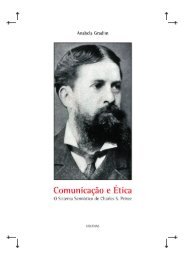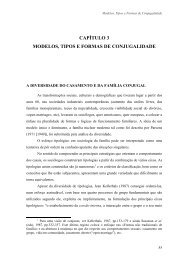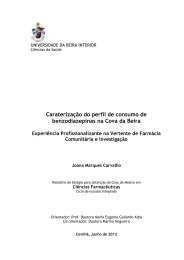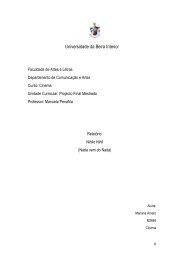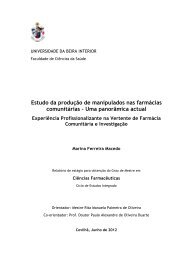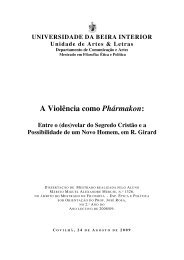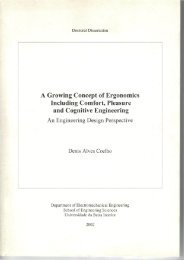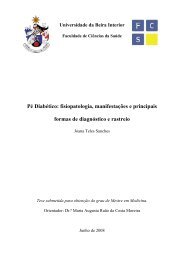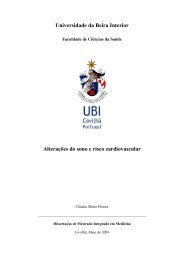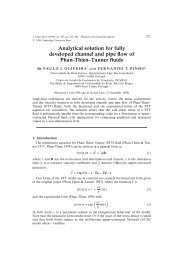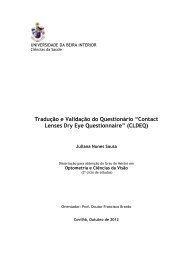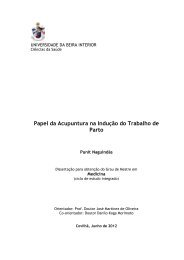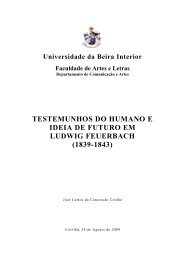Tese_Tânia Vieira.pdf - Ubi Thesis
Tese_Tânia Vieira.pdf - Ubi Thesis
Tese_Tânia Vieira.pdf - Ubi Thesis
Create successful ePaper yourself
Turn your PDF publications into a flip-book with our unique Google optimized e-Paper software.
Chapter III – Results and Discussion<br />
When using chitosan of high molecular weight, several particles were formed for some<br />
specific dextran/chitosan ratios like 1:6 and 1:3 for high molecular weight dextran (figure 7 A<br />
and C) and 2:3 for both high and low molecular weight dextran (figure 7 E and F). In figures 7 E<br />
and F are depicted the nanoparticles with a highly aggregated structure. Such assembly was<br />
caused by a strong interaction between polyions that occur rapidly by random incorporation of<br />
different polymeric chains into the particle structure (Sarmento et al. 2007). The finest particles<br />
were obtained with high molecular weight dextran at 1:6 (v/v) ratio of dextran/chitosan (figure<br />
7A). These particles were polydispersed and presented a spherical morphology with diameters<br />
ranging from 150 nm to 300 nm. The use of polymers with high molecular weight to perform<br />
nanoparticles can be an advantage for the posterior production of stabilized AgNPs. A study<br />
reported by Shkilnyy and colleagues showed that increasing the molecular weight of the polymer<br />
facilitates the formation of AgNPs, stabilizing therefore the colloids (Shkilnyy et al. 2009). A<br />
summary of the chitosan/dextran ratios where the production of nanoparticles was achieved is<br />
presented in the table 2.<br />
30



